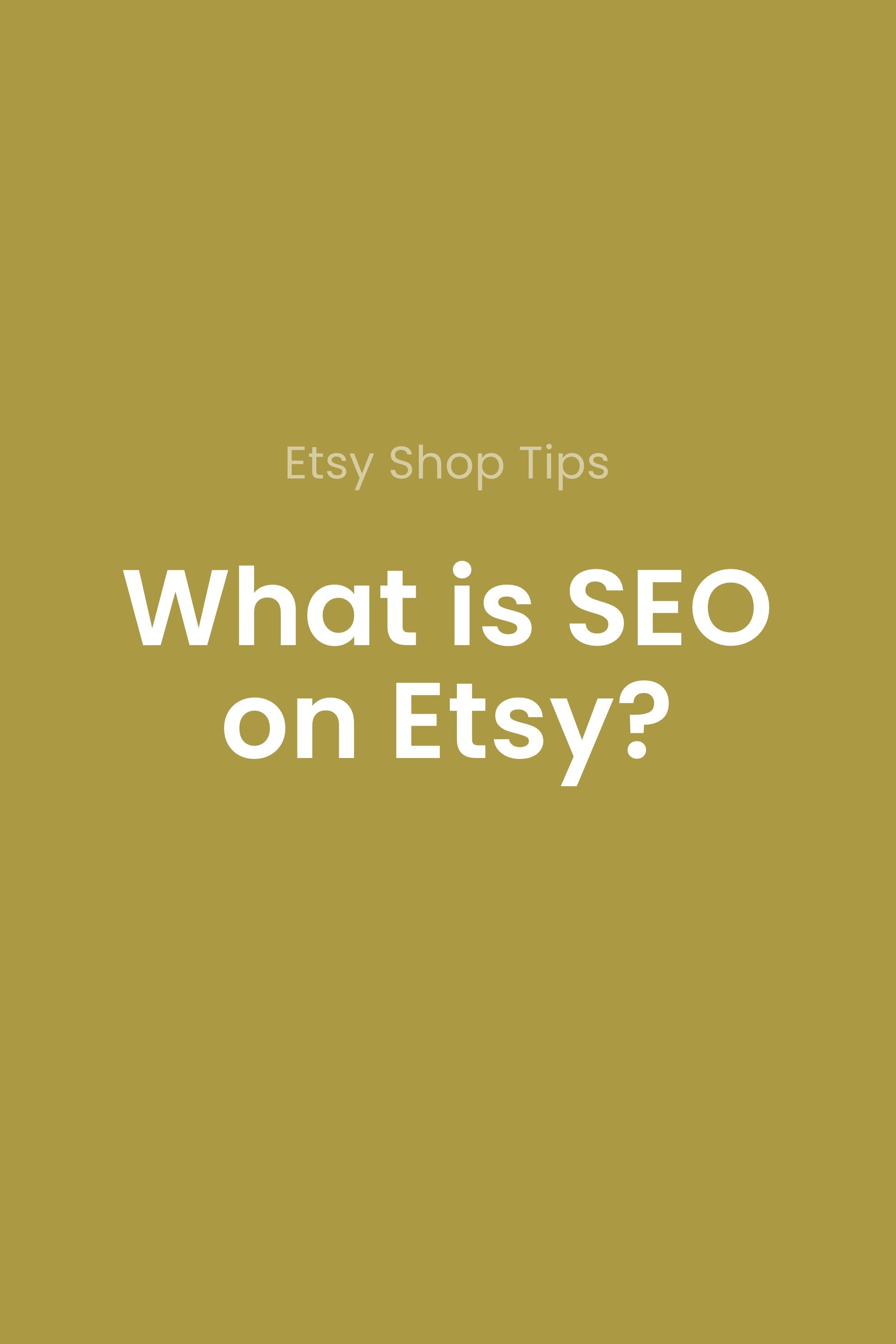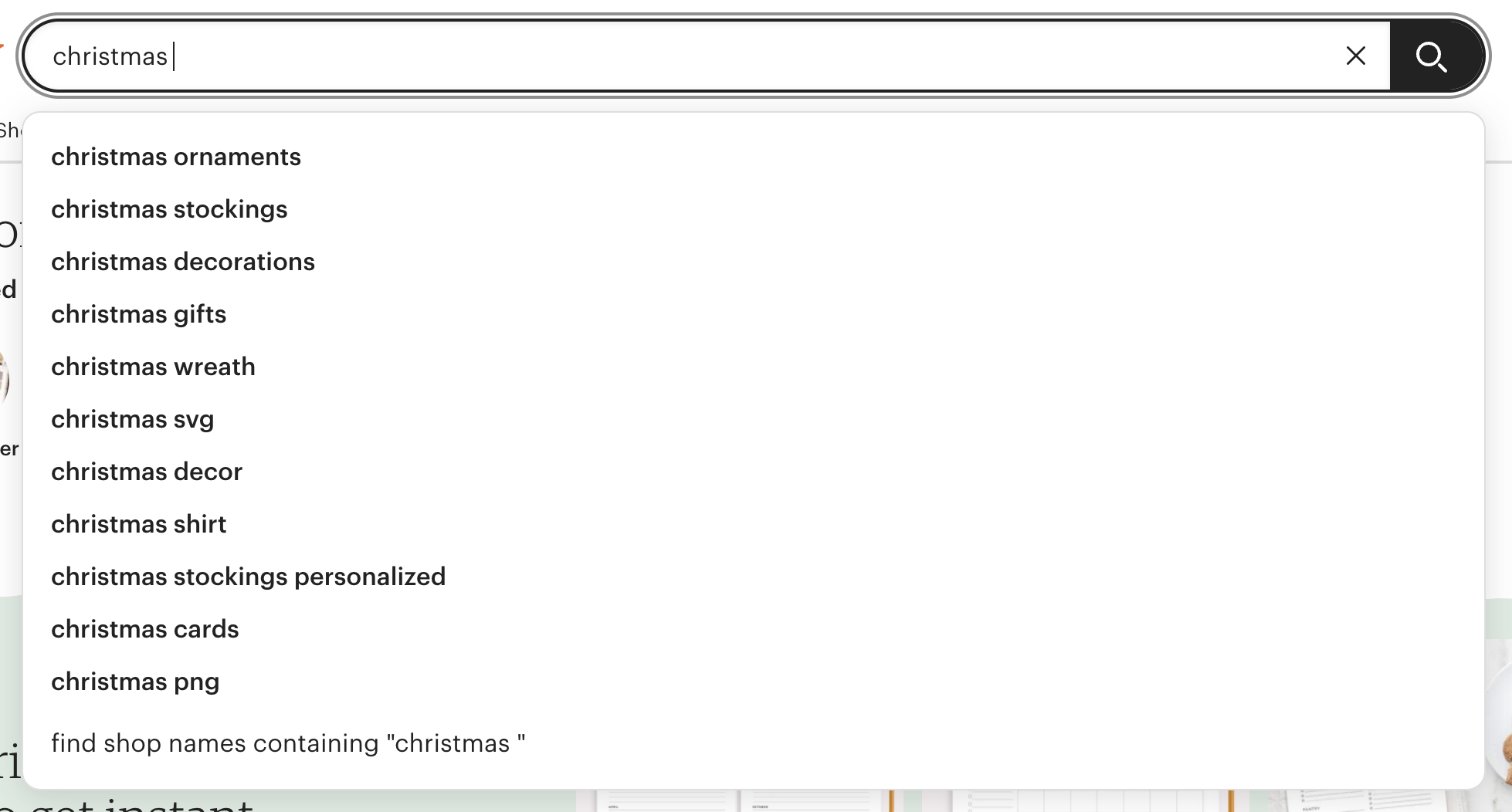My Top Etsy SEO Tips for Beginners
With over 3 million sellers on its platform, selling on Etsy can feel a bit like being a tiny fish in a big pond. The good news? There are a ton of people searching for that unique and creative thing that only you offer. You can help these customers make their way to you by working to boost the SEO of your Etsy shop.
What is SEO?
SEO stands for “Search Engine Optimization.” In your day-to-day life, SEO is the data that tells Google how to rank search results to ensure you’re finding what you’re searching for online. It’s a seemingly mysterious concoction of keywords in the post, images, titles, and more.
For the most up-to-date best practices from Google, you’ll want to go here. They tweak their algorithm all the time so it’s best to get the information straight from the source.
When you apply this concept to your Etsy shop, it means that the words you use in your post title, description, and other information are catering to specific keywords that people are searching for. SEO is a really important aspect of listing a product on Etsy because it can boost your shop’s visibility and get your items ranked higher in search results.
Here's how to get started with search engine optimization (SEO) for your Etsy shop
According to Etsy, these are the best practices for helping your items rank higher
Having a great product that’s unique and interesting
Finding keywords that describe your shop and shop listings
A free way to see what keywords you should use is by simply typing different keywords into the search bar of Etsy, Google, or Pinterest. In the image below, you’ll see that when I type “Christmas,” there are a bunch of suggested search items that come up. This tells me that these phrases are commonly searched for on Etsy and that I should use them to describe my products if I’m selling a related item.
Creating shop sections to organize your listings into categories
Not only is this great for shoppers, it’s also great for the search engines crawling your page to recognize your categories. Use very concise language here, I like to pretend what I would write if my Etsy shop was Target and I had to write the signs above the aisles that tell you what’s in it.
A good Etsy shop name and tagline
What’s in a name? A lot, apparently. In addition to having a shop name that describes what you do in the title somewhere (for me that’s the “design” in Firther Design Co.), you’ll want to make good use of your tagline area.
An easy formula for this area is “Type of Product” for “Audience/Benefit.” The goal is to say what you’re selling and what audience it’s for. So if you’re a wedding stationery store, you might say something like “Customizable wedding stationery for modern weddings.”
Item listing pages that have a well-written title and description
This is where the action really happens. For each posting, take some time to research keywords and be thoughtful about writing a title and description. I like to search related items on Etsy and look for listings tagged “bestseller” or “people have this in their cart” to see what popular keywords are being used.
Other sites linking to your site
It sounds a bit counterintuitive to talk about other sites benefitting your SEO, but I like to think it’s similar to giving someone a reference for a job. When Google sees another site linking to your shop, that’s a nod to them that “okay, this person must be legit and doing a great job if other sites are advising users to visit there!”
How do I find my SEO keywords on Etsy?
After you list an item, you’ll start to see keywords populating on the Search Analytics page on Etsy under the Marketing tab. This information is helpful, but since it’s in beta it can be a bit hard to use (there’s no ability to search keywords so you’ll end up with a huge list to sift through).
To find good Etsy keywords, I highly recommend paying for a keyword research tool like Marmalead or eRank. Marmalead is $19 a month and eRank is $5.99 per month for the basic plan. Google Keyword Planner is a free option, but it can be a bit overwhelming to use.
I avoided using a paid keyword tool when I first started on Etsy because I was leery of adding yet another fee to my monthly bill. However, I can tell you with certainty I would’ve been on a long path to no sales without it. Since Etsy is so competitive, keyword research is absolutely essential to having a profitable shop.
Kara Buntin on YouTube is one of the most knowledgeable and no-nonsense people I’ve found for Etsy SEO tutorials so I highly recommend checking out her page as well to learn more about finding keywords for Etsy.
SEO Checklist for a New Etsy Listing
It can be kind of overwhelming when it seems like absolutely everything can be optimized 24/7. Here’s a straightforward checklist you can use as a guide to making sure you’re covering the SEO basics.
Product Title: Use your top keywords in the product title. Really put yourself into the shoes of someone who would be searching for your item and consider different words to include in your SEO keyword research. For example, if you sell birthday decor it’s better to say something like “Girl’s First Birthday Table Decor with Pink Unicorns | Whimsical Theme Child’s Party Decorations” than “Unicorn Birthday Table Decorations.”
Product Attributes: Make sure all attributes applicable to the product are filled out (ex: color, label shape, etc)
Tags: Use every tag! The tags area of the listing is a good place to include more specific keywords to cast a wider net.
Product Description: Once you complete your product title and tags, use that information to write out your product description. Etsy now includes product descriptions into consideration for ranking.
SEO mistakes to avoid on Etsy
Keyword stuffing. There’s a fine line between writing something optimized for a search engine and something that a customer actually wants to read.
Making changes all the time. Once you make a change to a listing, Etsy needs some time to sit with the info!
Writing in a robotic way. Keywords are key for SEO but you also need your product names to be easily scannable to people searching for them.
Avoid duplicating the same keywords all over your listings.
Do not purchase links to your site, Google will be able to recognize the source as untrustworthy and fake.
Fix any broken links or pages right away. Google wants to know that if they’re sending someone to your site that they’ll actually be able to see the correct content when they get there.
In conclusion
SEO is kind of like the Instagram algorithm, always changing and kind of mysterious. With these tactics in place you’ll be well on your way to ranking higher in search. As always, the Etsy Seller’s Handbook is a great resource to dive into the nitty-gritty details. This post barely scratches the surface of all there is to be learned about SEO so stay tuned for more in-depth articles to walk you through the foundations of SEO.



